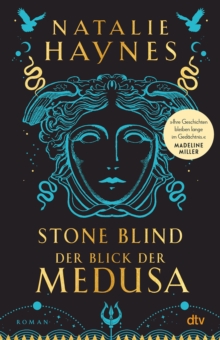


Readers will have to decide for themselves whether Haynes has succeeded in vindicating Medusa, as I personally felt that Stone Blind was missing a crucial element – Medusa herself. In contrast to Medusa and her sisters, the novel uses a sarcastic voice to portray the gods, kings and heroes as weak Zeus is an imbecile and a philanderer, Athene is a narcissist and Perseus is a petulant child.įor many readers who are familiar with the myths, this may bring about the rightful vindication for Medusa however, the strength of the humorous voice when focusing on the secondary characters may leave readers feeling that Medusa’s sections are less engaging, which leads to her backstory feeling slightly shallow. This creative, roving eye gives the novel an epic feel, as we move between the Gods on Olympus to Perseus and Andromeda. The story is told from several points of view, including animals and non-sentient beings. In particular, the relationship between Medusa and her sisters is the emotional core of the novel. This theme resounds throughout the book, as Medusa is seen as a kind woman who is used and abused by the gods through no fault of her own. The novel opens with the Gorgoneion asking whether the hero is always brave. Haynes’ novel takes common elements from ancient literature, weaving them into a narrative alongside other mythological tales, such as the birth of Athene and a re-imagining of Medusa’s upbringing. Lovers of Classics will be drawn to this novel, as it has a fresh, humorous voice and an interesting, creative structure. Her latest novel, Stone Blind, is about Medusa the famed gorgon with snake-hair who can turn people to stone with a look.

They fear us, so they call us monsters.Medusa is the only mortal in a family of gods. Natalie Haynes is known for writing novels about ancient Greek myths, choosing to focus on the female characters rather than the male heroes. Natalie Haynes the Womens Prize-shortlisted author of A Thousand Ships brings the infamous Medusa to life as you have never seen her before.


 0 kommentar(er)
0 kommentar(er)
